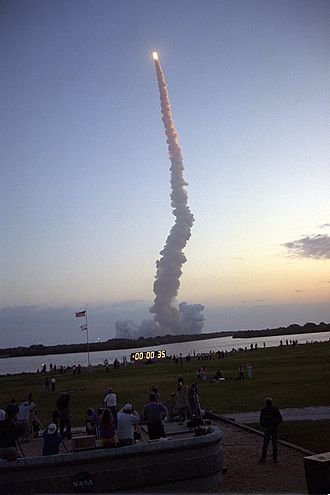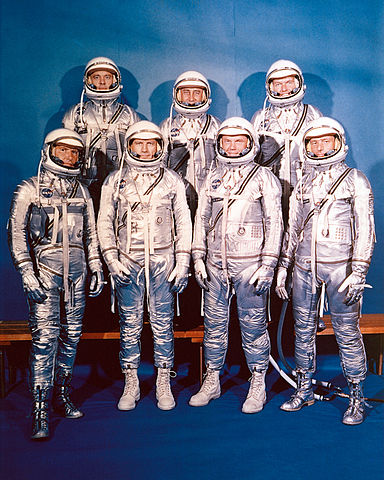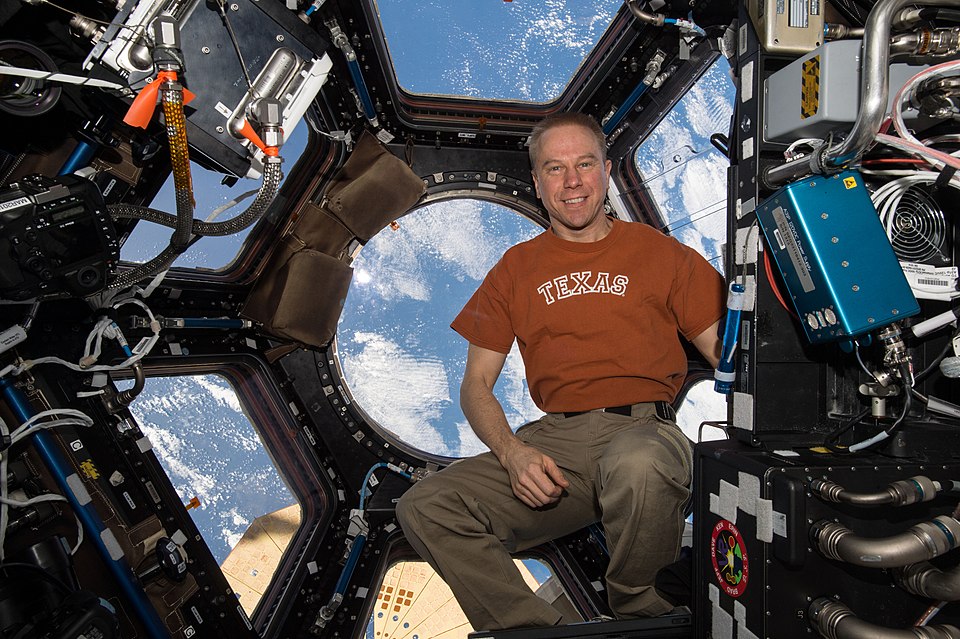
1994 – STS – 59. Launch. SLR-1 Space Radar Laboratory. Primary mission objectives were deployment of the Laser Geodynamic Satellite II (LAGEOS-II) and operation of the U.S. Microgravity Payload-1 (USMP-1). Seconday payload included Canadian experiment, CANEX-2 and other instruments provided by the European Space Agency. Landing April 20, 1994.

(standing in rear, left to right) Kevin P. Chilton, pilot; and Sidney M. Gutierrez, commander. Seated left to right are Linda M. Godwin, payload commander; and mission specialists Thomas D. Jones, Jay Apt, and Michael R. Clifford.
1965 – Manned space flight control transferred to Houston
1959 – NASA Administrator T. Keith Glenn anannounces the selection of the United States’ first seven astronauts, who become known as the “Mercury Seven”.

Back row: Alan Shepard, Gus Grissom, Gordon Cooper. Front row: Wally Schirra, Deke Slayton, John Glenn, Scott Carpenter.
- Alan Bartlett Shepard, Jr., USN (1923-1998); first American in space, May 1961
- Virgil Ivan “Gus” Grissom, USAF (1926-1967); flew 21 July 1961. Died 1967 during Apollo 1 pre-launch test
- John Herschel Glenn, Jr., USMC (born 1921); first American to orbit the Earth, 20 February 1962
- Malcolm Scott Carpenter, USN (born 1925), flew 24 May 1962
- Walter Marty “Wally” Schirra, Jr., USN (1923-2007), flew 3 October 1962
- Leroy Gordon “Gordo” Cooper, Jr., USAF (1927-2004), flew 15 May 1963
- Donald Kent “Deke” Slayton, USAF (1924-1993); grounded in 1962, but reinstated in 1972 and flew on the Apollo-Soyuz Test Project in 1975.
Birthdays
1963 – Col. Timothy Kopra. NASA Group 18 (2000) 3 EVAs: 13hrs, 31 mins. Time in space: 244d 1h 1m
STS-127/128 (Expedition 20)
Soyuz TMA-19M (Expedition 46/47)

